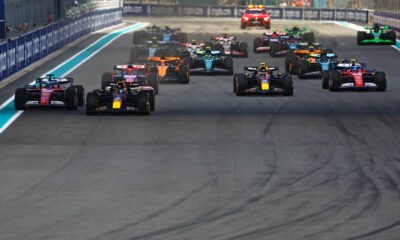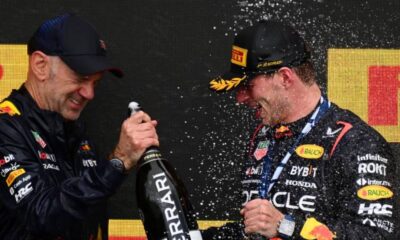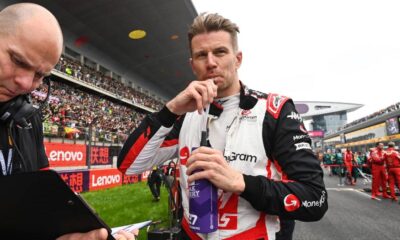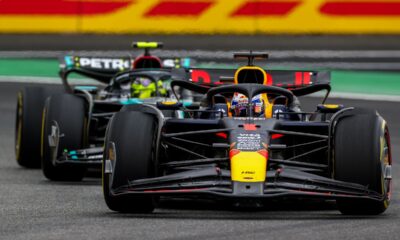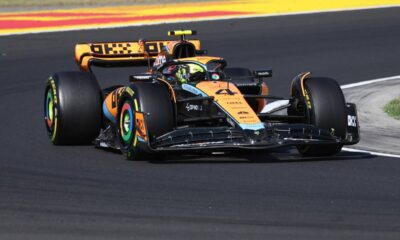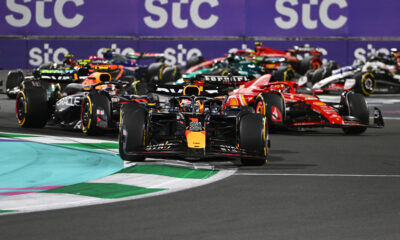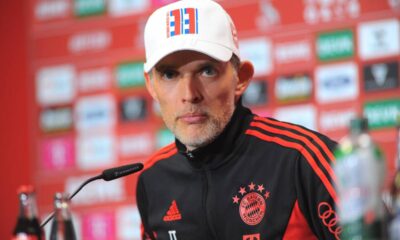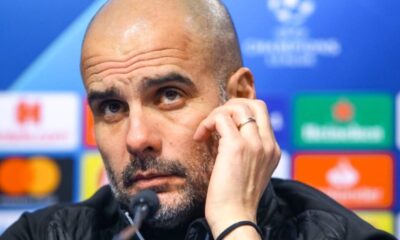Motorsport
Hard hit and a big crash! Russell wrecked his Mercedes, Verstappen didn’t finish the race either. How did the Australian Grand Prix end?
This year’s Australian Grand Prix offered a completely unexpected course. The Albert Park event simply proved once again its unpredictability and the fact that it offers a great show and a good race almost every year. Carlos Sainz was the winner of the third race of the 2024 season, with Ferrari recording a double. Max Verstappen, Lewis Hamilton and George Russell, who demolished his Mercedes at the end, did not finish the race.
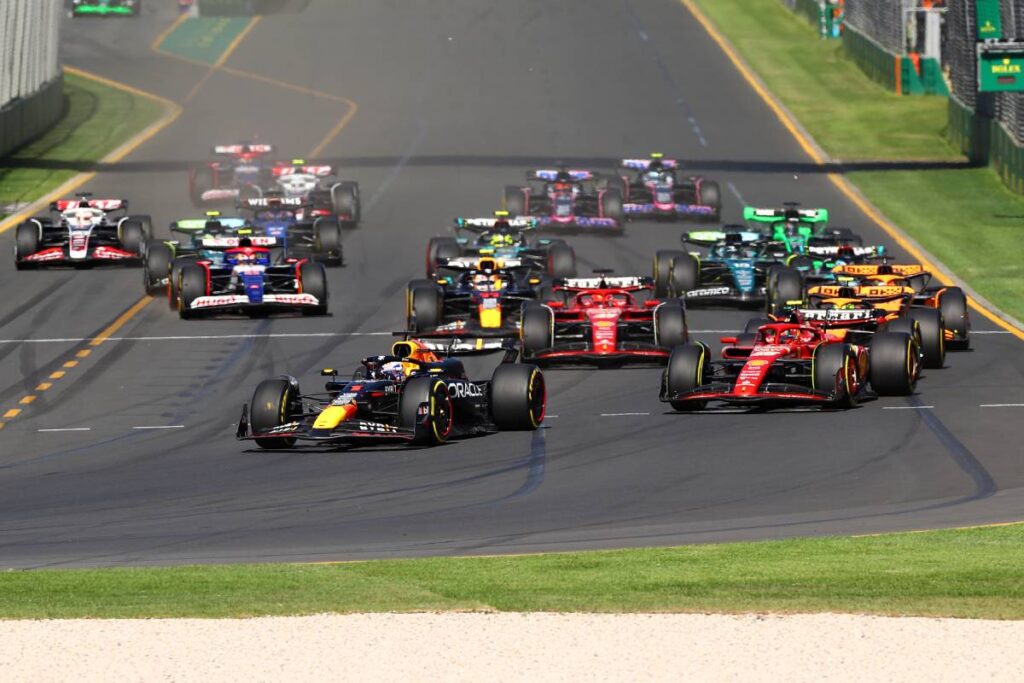
This year’s Australian Grand Prix offered a completely unexpected course. The Albert Park event simply proved once again its unpredictability and the fact that it offers a great show and a good race almost every year. Carlos Sainz was the winner of the third race of the 2024 season, with Ferrari recording a double. Max Verstappen, Lewis Hamilton and George Russell, who demolished his Mercedes at the end, did not finish the race.
Max Verstappen took pole position for the start of the Australian Grand Prix after qualifying on Saturday. He was joined on the front row by Carlos Sainz, with Lando Norris third, Charles Leclerc fourth and Oscar Piastri completing the elite five.
Sergio Pérez was given a three place grid penalty for impeding Nico Hülkenberg. As a result, he started the race at Albert Park from the sixth starting slot. The full standings before all five lights went out can be seen in the post below.
It should be added, Daniel Ricciardo did get a new power unit before the race, but it was avoided without any penalties. A new front wing with a different specification was given to Zhou Guangyu and he started the Australian Grand Prix from the pits.
Australian Grand Prix – Introduction
The start itself was uneventful and uneventful, but then things happened. Sainz took the lead from Verstappen on the second lap, and the Red Bull Dutchman then retired from the race for good on lap five.
The problem was a technical failure, namely the overheating of the right rear brake, which eventually caught fire. The battle for first place was wide open.
It must be added, most of the starting field started the race on a medium set of C4 tyres, but they didn’t last very long. This is because Pirelli had nominated the softest tyre compounds for the Melbourne race and from the available data, the expected strategy from practice was to make two stops, tyre degradation was high during the race.
As a result, the drivers first went to their mechanics on laps ten to fifteen. Sainz established himself at the front of the race, with Leclerc moving into second place. Third place was captured by Britain’s Norris after a team direction and a swap of positions, with Australian Piastri, who drove a home race, fourth.
Pit-stops during the Australian Grand Prix understandably mixed up the standings. But after all the stops were completed, it was this order that settled at the front. Fernando Alonso also finished high during the third race of the season, but he dropped to fifth after his stop.
Next Australian Grand Prix
It was fifth place that changed hands in the following laps. In addition to Alonso, Pérez and George Russell also challenged for the top five. On lap 17, after Verstappen, another driver dropped out of the race. This time it was Lewis Hamilton, whose engine failed.
We then saw several battles on track from the halfway point of the race. Hülkenberg and Alexander Albon, for example, fought very hard, and the German driver eventually emerged victorious. Of course, the order was also shuffled by the second pit stops, with overtaking also taking place at the back of the grid.
Sainz, Leclerc, Norris, Piastri, Russell, Pérez, Alonso, Stroll, Cunoda, Hülkenberg. This was the order of the elite ten after the second pit-stops. It should be added, however, that the only driver without a second stop on lap 45 out of 58 was Russell, who spent a total of 36 laps on the hard tyre set.
After a tyre change on lap 47, he returned to the track in seventh position, ahead of sixth-placed Alonso. Pérez moved up to fifth thanks to the Mercedes driver’s pit stop.
This similarity in the top ten points standings held until the final laps before a very surprising moment. Russell’s duel with Alonso ultimately failed and he lost his car in turn six on the final 58th lap, and subsequently crashed heavily.
It wasn’t heard on the broadcast, but Russell called for red flags via the team radio. However, yellow flags were waved on the track and the race directors resorted to a virtual safety car. Stroll moved up to seventh, Cunoda to eighth, Hülkenberg to ninth. And Kevin Magnussen also scored a point thanks to Russell’s accident.
The Mexican Pérez, who did not have a good race behind him, finished fifth. Fourth went to home favourite Piastri, with Norris on the podium thanks to his third place.
What did the Australian Grand Prix do to the championship standings?
McLaren gained very important points for the Constructors’ Cup, currently third with 55 points. A great success for the Ferrari team, which won a double at Albert Park!
Two weeks after his appendectomy, Sainz celebrates an absolutely convincing victory and deservedly becomes the best driver of the day. Leclerc accompanied him on the podium with a second place. In addition, the Monegasque set the fastest lap of the race (1:19.813) and scored an extra championship point.
On the other hand, it was a disastrous race for Mercedes, which did not score a single point. Once again, Alpine, Sauber and Williams finished without a point. Four points were scored by Cunoda in the RB car. Three points were scored by Haas thanks to Hülkenberg’s ninth place and Magnussen’s tenth.
Source: F1, X

-
Bundesliga5 days ago
Tuchel back in the Premier League? I loved it in London, admits Bayern coach. Will the LM have an impact on his future?
-
Champions League5 days ago
PSG fans reminisce about the era with Neymar and Messi. But a third name will leave them
-
Bundesliga7 days ago
Will Guardiola return to Bayern? The club’s sporting director remains optimistic, as the famous coach’s representatives have expressed?
-
Champions League5 days ago
Super-goal scorer Joselu’s two late goals put Real Madrid into the Champions League final
